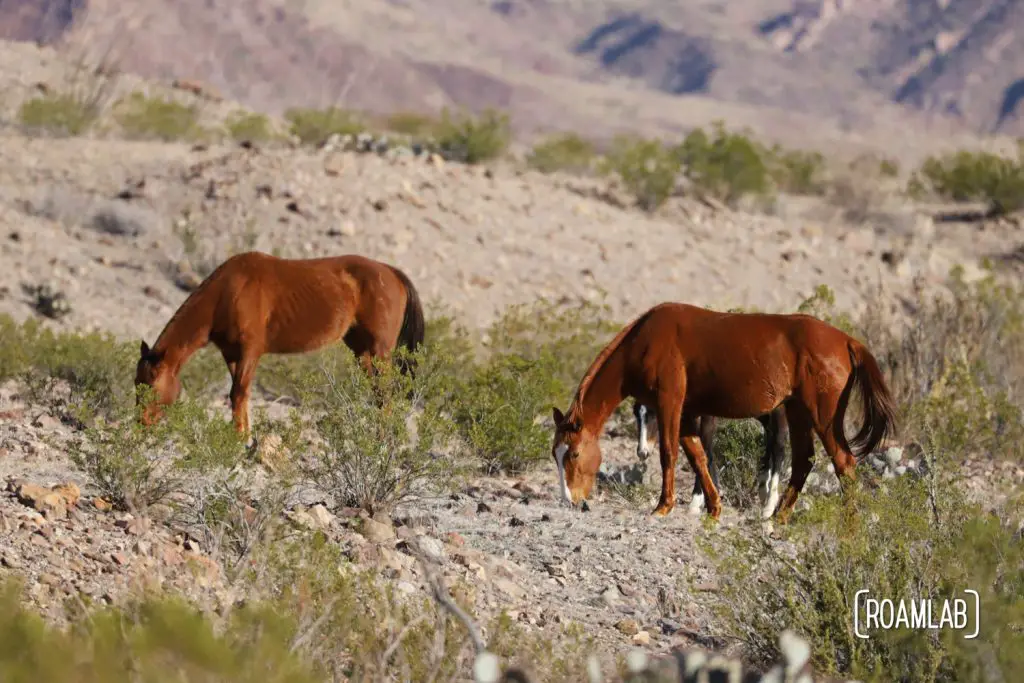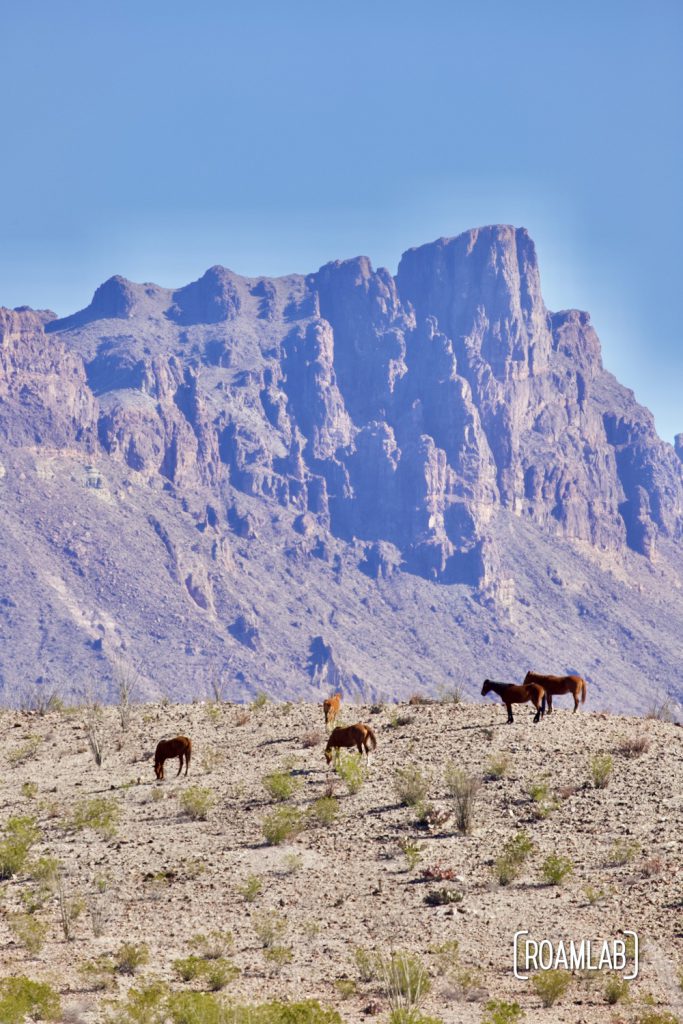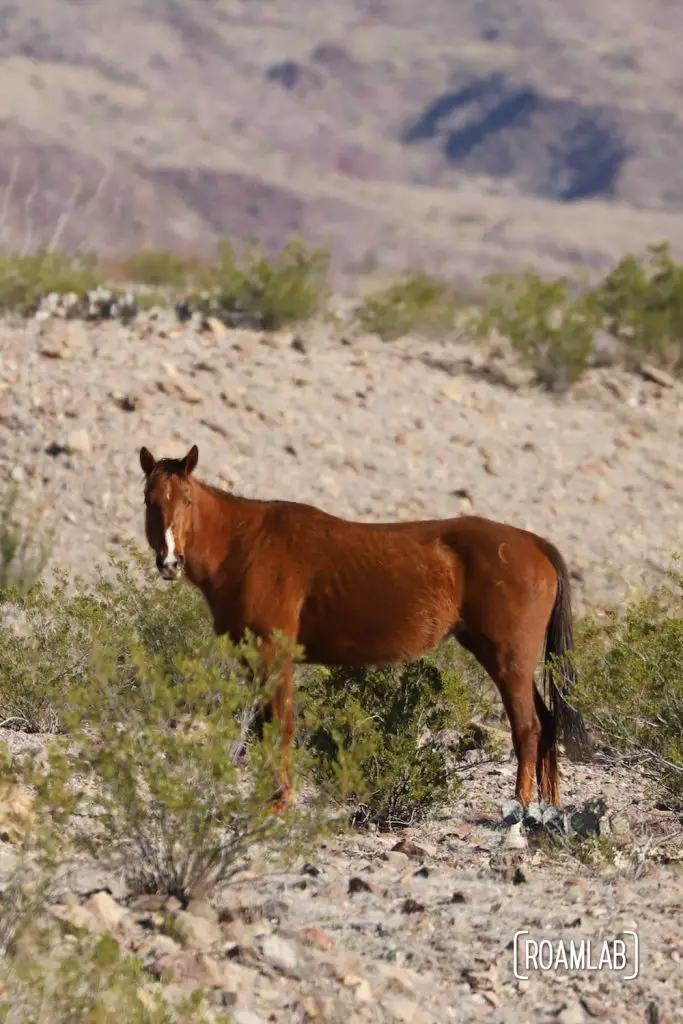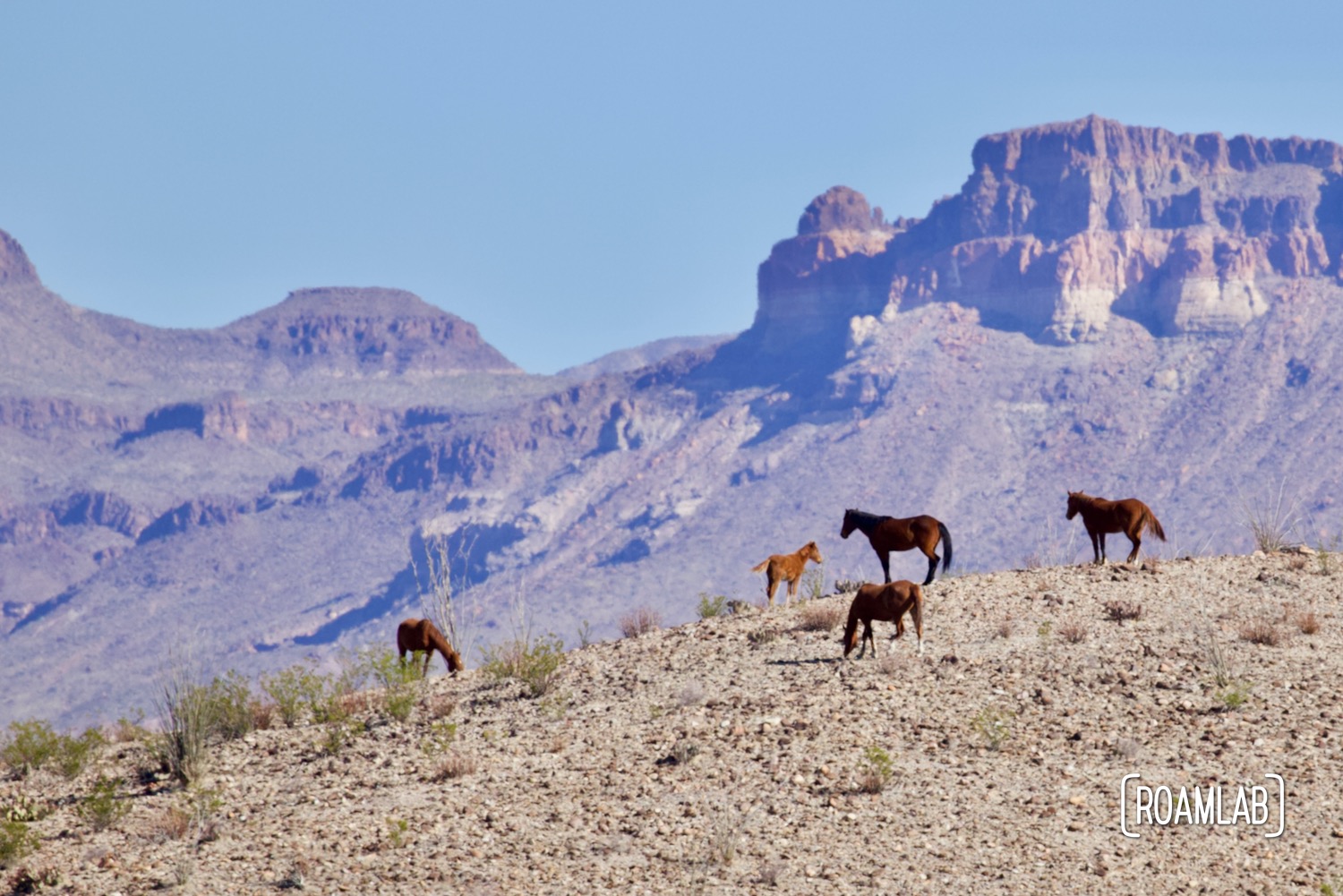The only mules ears that are supposed to be in Big Bend National Park are the iconic rock formations. And yet, as we drive down River Road in the park’s backcountry, we encounter a veritable herd of mules and horses grazing on the greener shrubs near the Rio Grande. Our first thought is “wow, wild horses!” I delightedly snap away. It isn’t until we are back in cell range that I start reading an article by the Texas Standard about these hooved trouble makers.

You see, they aren’t wild. These hooved hooligans are domesticated livestock who cross the Rio Grande in search of the relatively greener pastures in Big Bend. It isn’t as if a horse comprehends the ecological concerns they raise—that the reason for the rich wildlife here is a concerted effort to protect native species—or the damage the livestock causes. But these horses and mules can be incredibly harmful.
The National Park System exists with a mandate to preserve wilderness for future generations under the Organic Act of 1916. But defining “natural” is a nuanced matter. While ranching used to be common across this region, the horses in Big Bend are not wild, and their presence strains an already delicate environment. Between the domestic horses and native wildlife, something has to give.
Which creates a special kind of a mess. These aren’t just the livestock of your average ranchers losing track of their herd. This is a national border. If the livestock from Mexico crosses the Rio Grande into the United States, following them across to retrieve them is can be an ordeal. For some well-off farmers, this oversight may be a calculated risk, allowing livestock to fatten up on the park’s flora, presuming that, more often than not, the animals will return before they are caught. But many of these ranchers are operating at a subsistence level, unable to afford to build fences and corrals to manage the livestock.
After testing programs that fine the ranchers and return the livestock to the owners, the park is now playing hardball: seizing the wayward steeds and auctioning them off. Park Rangers and USDA round up the offending livestock into trailers and sell them at auction in Presidio, Texas. It can be devastating to a small-scale rancher. But it clearly hasn’t stopped the livestock from wandering across the border. It’s an unfortunate mess that isn’t exclusive to Big Bend, but the border makes the divide particularly divisive.
For us, it’s a reminder of the incredibly nuanced balance between public and private property, where conservation comes in conflict with commerce, and the grey areas that we all can wander into.
Sometimes, a charming wildlife picture is not of wildlife.








